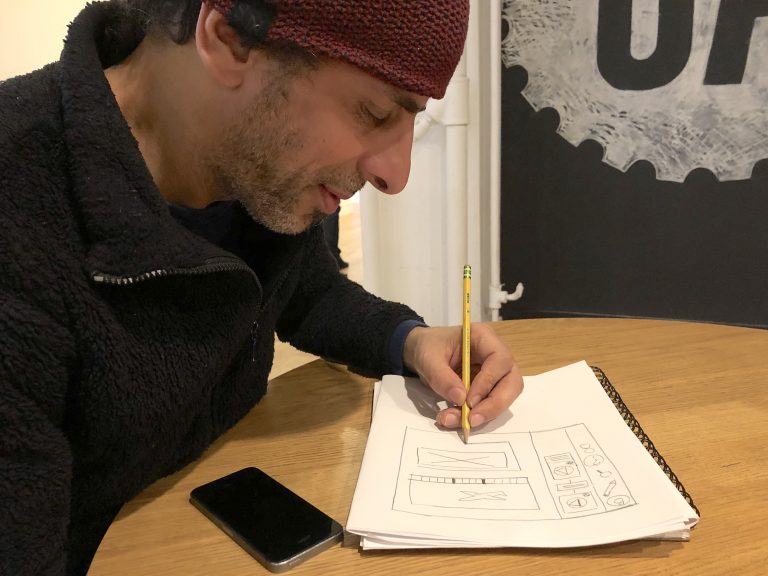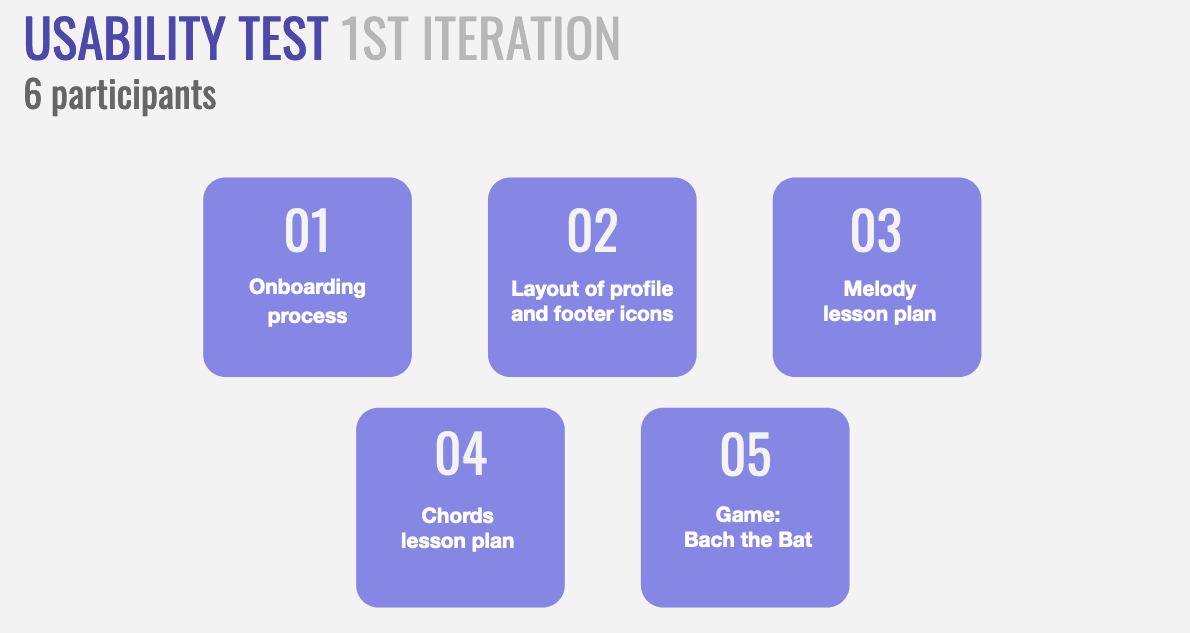ULTIMATE EAR TRAINER
The Natural Way Of Learning Music
MUSE MUSic Education
Company Overview
Focusing on music educational apps that “that are personalized and go beyond the boring, traditional way of learning to bring music learning to engaging new levels!”
Objective
- To create a high-fidelity prototype for an ear-training app which teaches users musical recognition by ear
- Interactive, customizable way of learning music
Ultimate Ear Trainer actually teaches you by having you listen to examples you are already familiar with, in engaging ways to get you quick results. Then when you are ready you are appropriately tested of your new learned skills so you can properly advance to new levels and even play ear training games with others.
We combine user customization, engaging gamification, that improves your learning experience that are more in line with your natural way of learning than the out dated traditional methods.
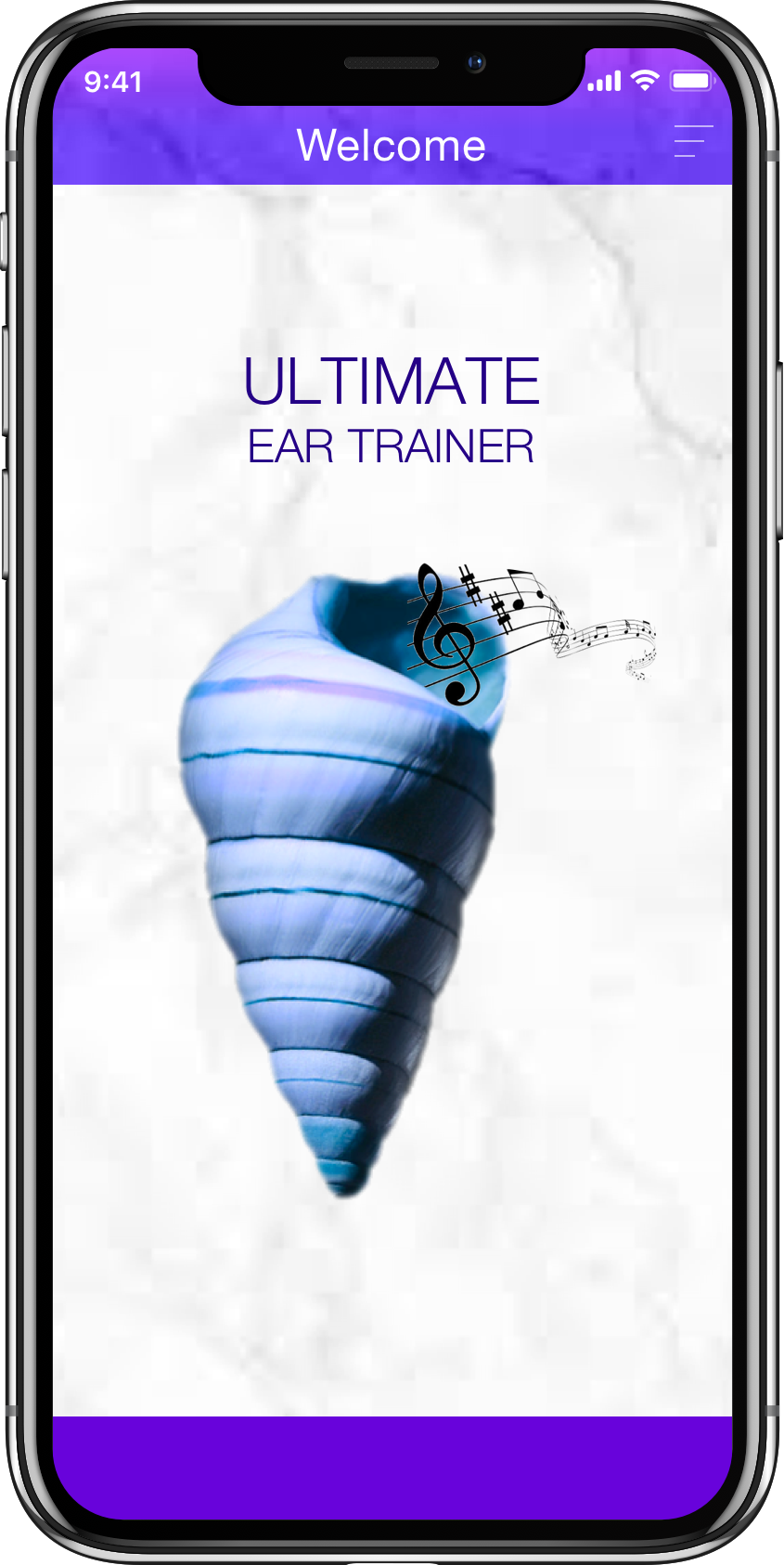
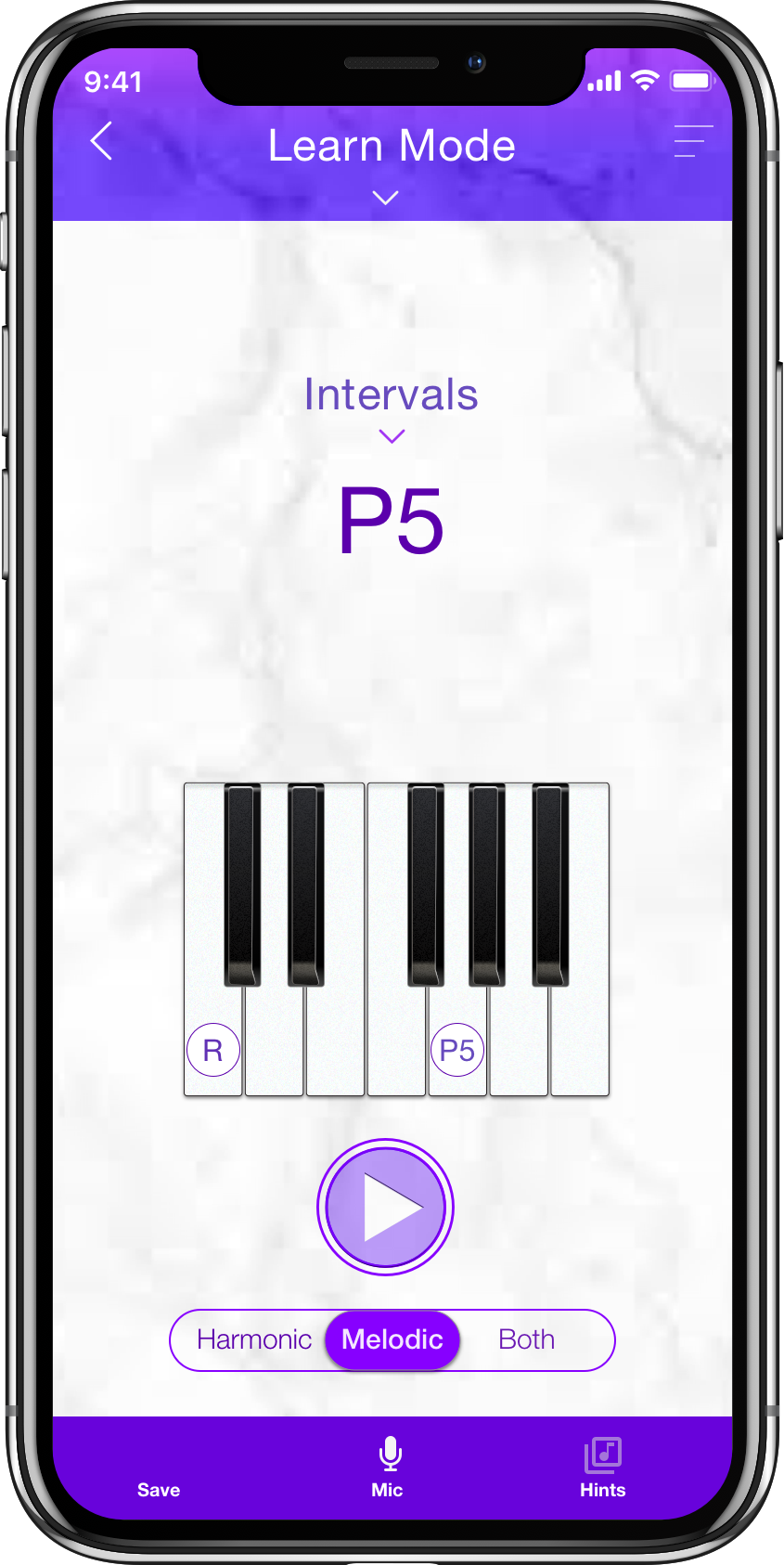
Problem Statement
Typical ear training apps and other tools, quickly jump right into testing your ability to distinguish notes, chords or melodies without giving you comprehensive lessons to train your ear. Some might quickly review intervals and give not so useful tips which in the end do not get quick proven results.
Elton needs an engaging* way to recognize melodies and chords so that he can figure out the songs he wants to play instantly and for live performances. *engaging meaning non-repetitive, non-passive, and not boring
Hypothesis
Ultimate Ear Trainer actually teaches you by having you listen to examples you are already familiar with, in engaging ways to get you quick results. Then when you are ready you are appropriately tested of your new learned skills so you can properly advance to new levels and even play ear training games with others.
We believe that by creating an app that teaches Elton to recognize melodies and chords in an interactive way using songs of his choice, we can help him improve his ability to play the music he hears around him and in his head onto his instrument spontaneously.
Business Goals and Technical Specifications
The Ultimate Ear Trainer App identifies a gap in ear training applications on mobile platforms and other mediums. A large number of music students and musicians have trouble identifying and remembering musical notes, melodies, and chords by ear. Our solution is designed to alleviate that stress. Employing anticipatory design and the latest AI technologies the App delivers a customized and engaging way of learning.
My method was to use design thinking and a user-centered design process to make a product based on a deep understanding of the user's needs, behaviors, goals, and motivations and to empower them with a powerful tool combined with great user experience.
Usability Testing and Usage Analytics Reports
Throughout the various stages we implemented Usability Testing to gather feedback, collect data on usage, refine, the designs, and start the cycle all over again.
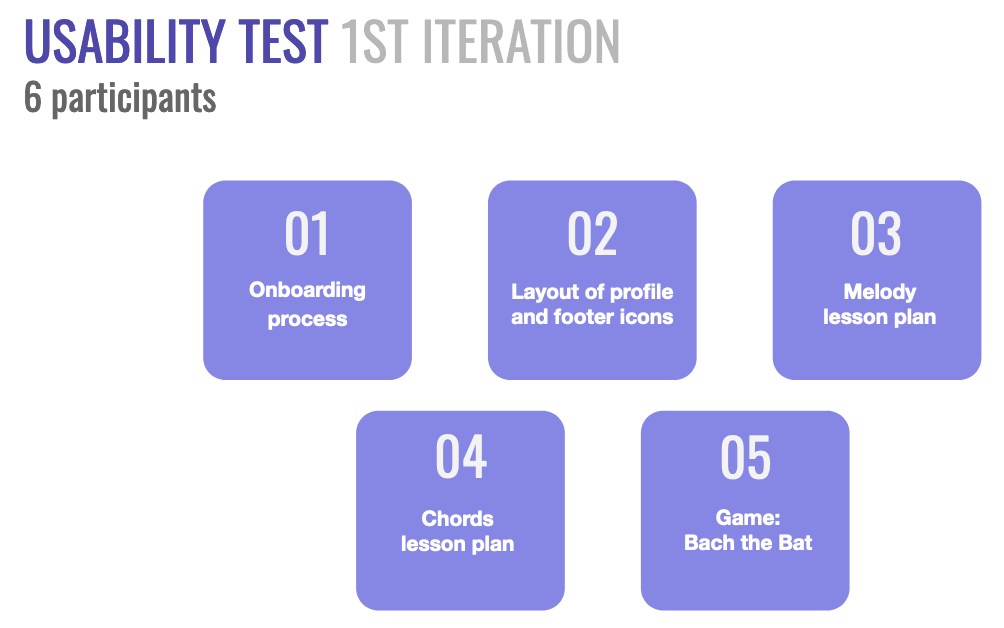
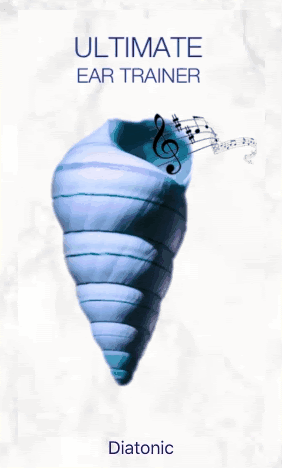
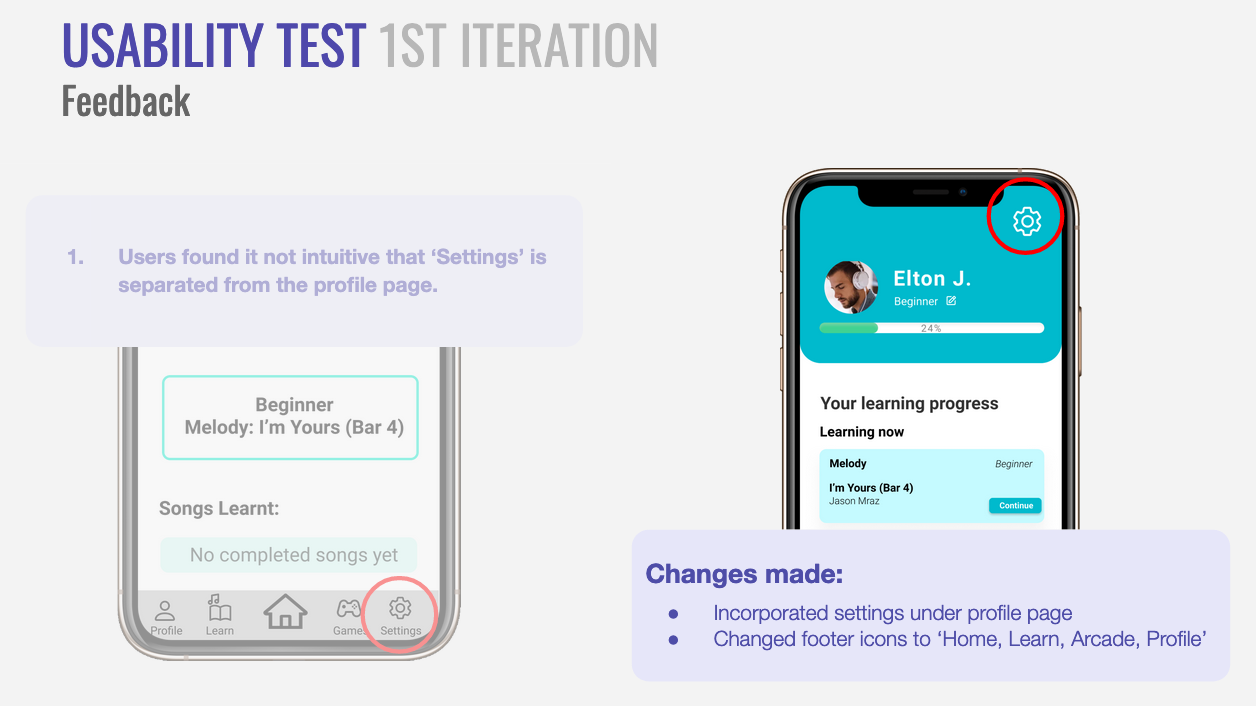
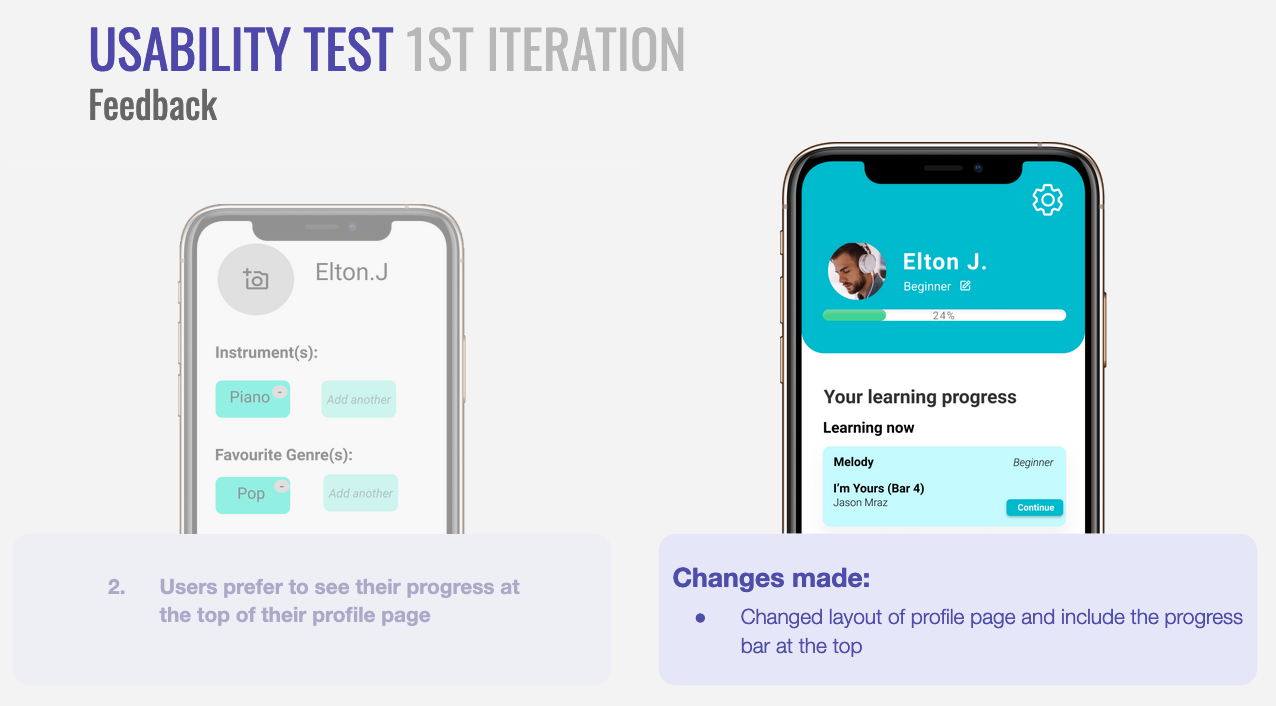
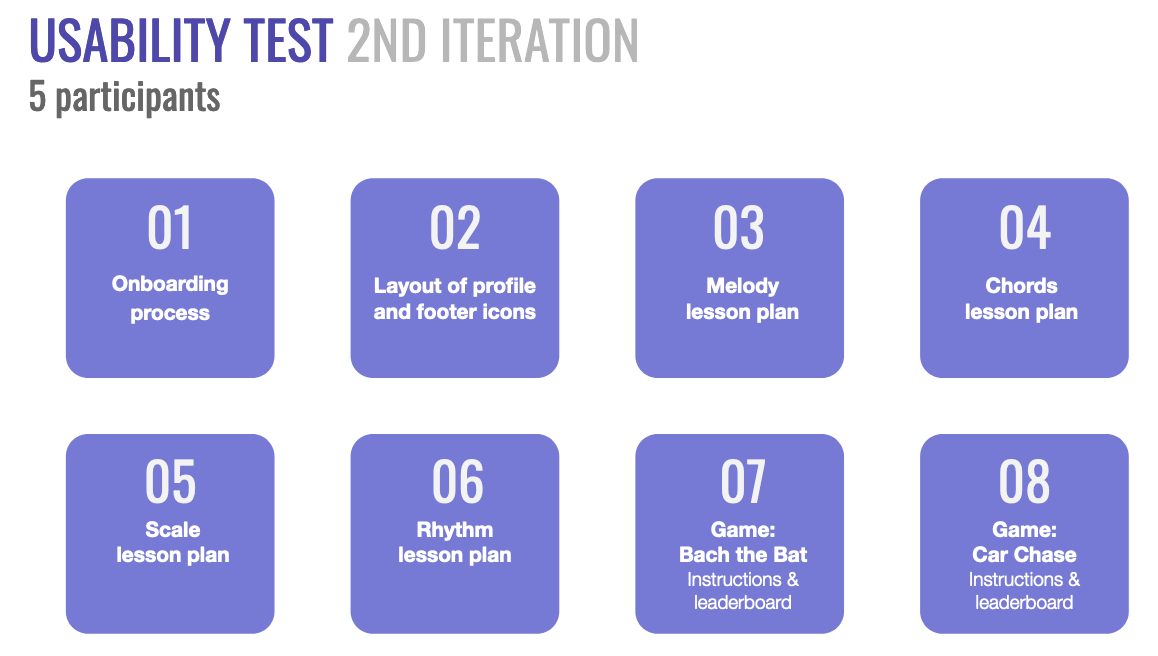
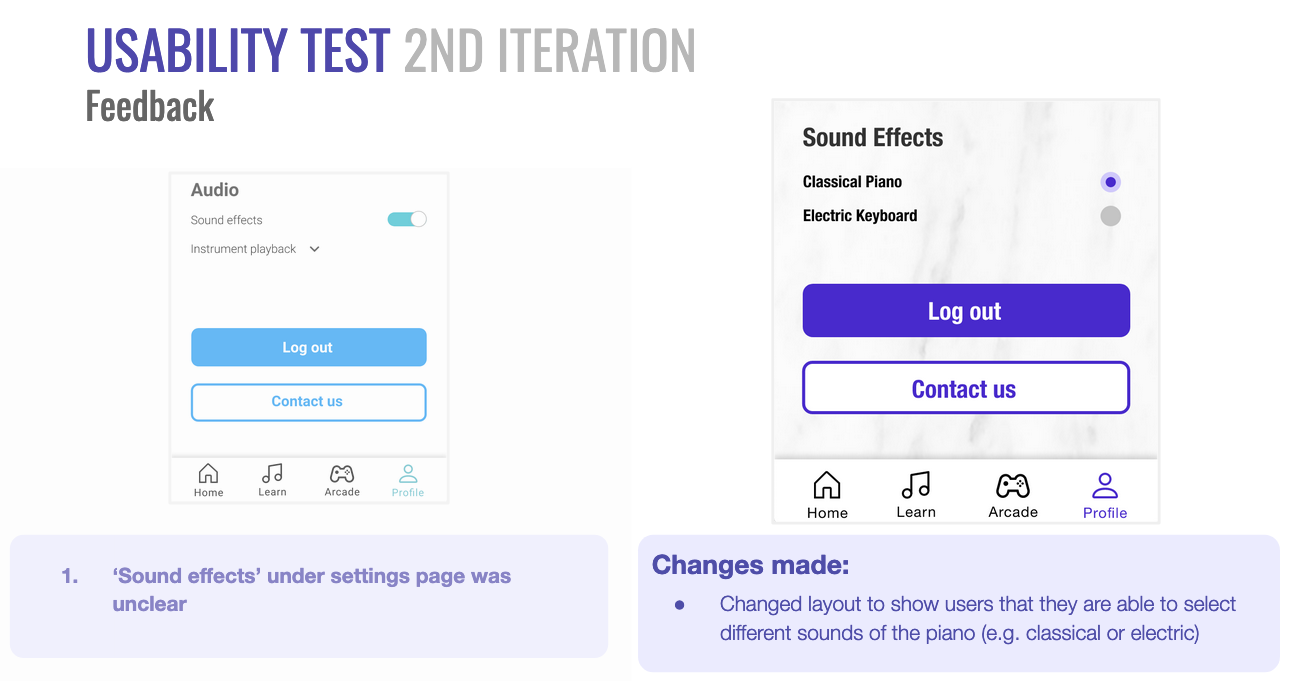
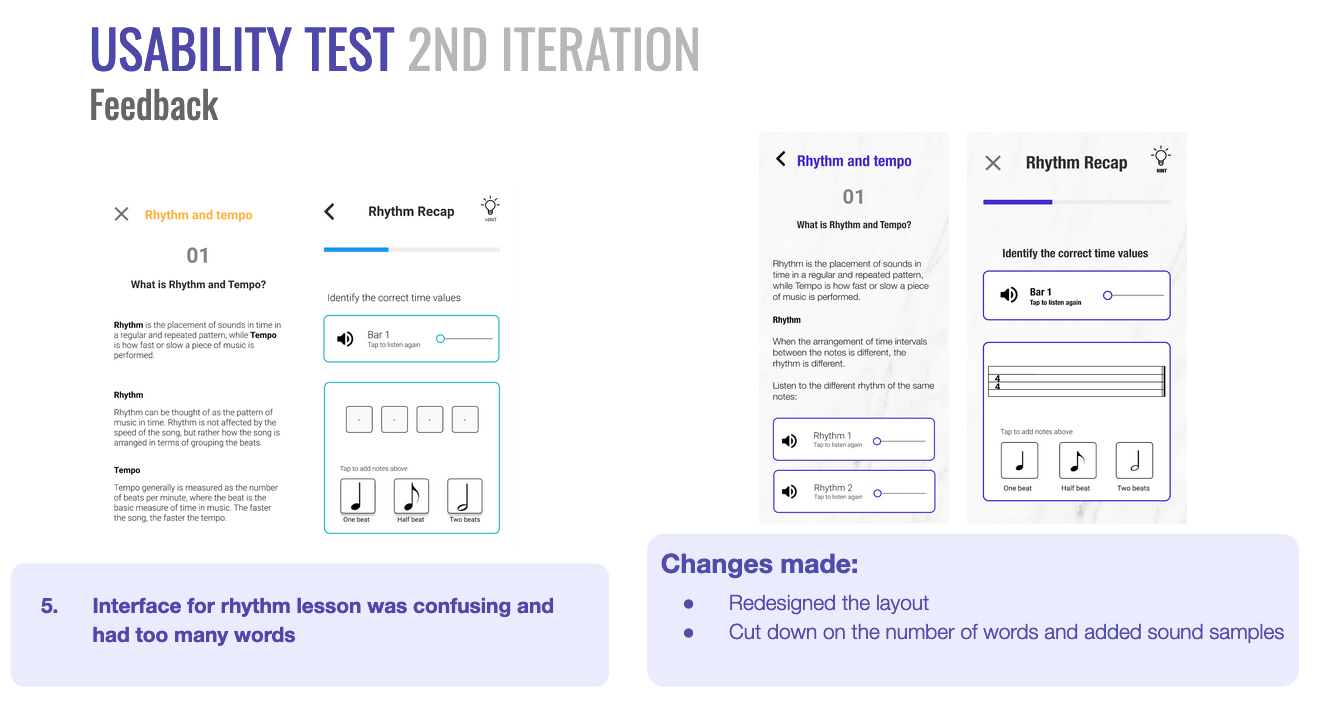
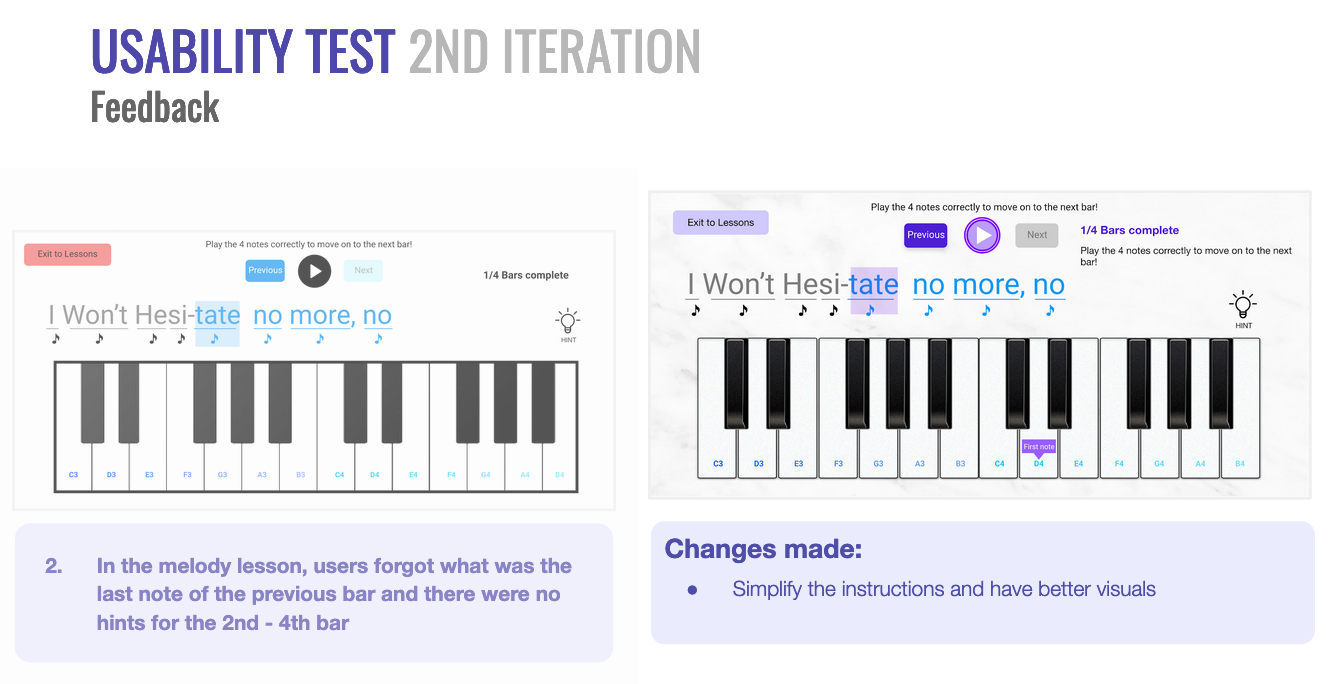
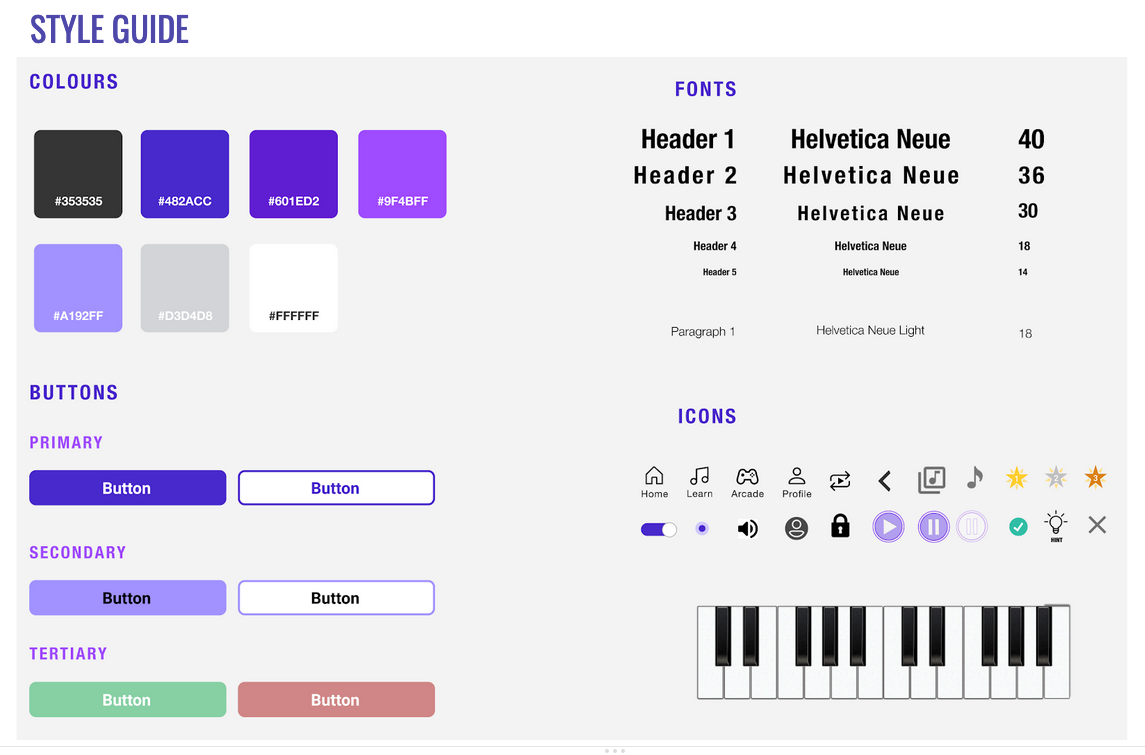
Initial User Survey, Interviews and Testing
User Survey
Gather quantitative data with results pointed us to the general direction of the problem.
User Interviews
Qualitative approach to take a deeper dive into the insights that were mentioned in the survey.
UX Wireframes
I then got the team to explore ideas and brainstorm by doing a Design studio and sketching up simple wireframes to quickly ideate solutions that address customer goals.
Second User Testing
Research Goals
The goal of the research is to find out the motivation and pain points of ear training, what the users want to achieve from learning music by ear and what would help enhance their learning. (Ear training/ music aural)
Participants
These are the primary characteristics of the study's participants:
· Tertiary student or young working adult
· Age 20 - 30
· Knowledge of at least 1 instrument
· Basic to intermediate music knowledge
Methodology
A user interview were conducted remotely with the participants. The sessions lasted 30 - 45 minutes and included a short briefing, user interview session as well as a usability test of the existing ear training app.
User Insights
Users prefer to take music as a recreational activity as opposed to an examinable subject (Recreational player).
Users want to play the things they like alone and/ or in front of others (How to incorporate the social aspect).
Users want challenges that align with their musical ability.
Research Goals
The goal of the research is to find out the motivation and pain points of ear training, what the users want to achieve from learning music by ear and what would help enhance their learning. (Ear training/ music aural)
Methodology
User interviews were conducted remotely. The sessions lasted 30 - 45 minutes and included a short briefing, a user interview session, as well as a usability test of the existing ear training app.
Features
Learn Mode, Practice, Test Mode and Player Mode
Connect to your Music Libraries:
iTunes, Soundcloud, Spotify, Pandora, and YouTube
Games
Play with your friends .
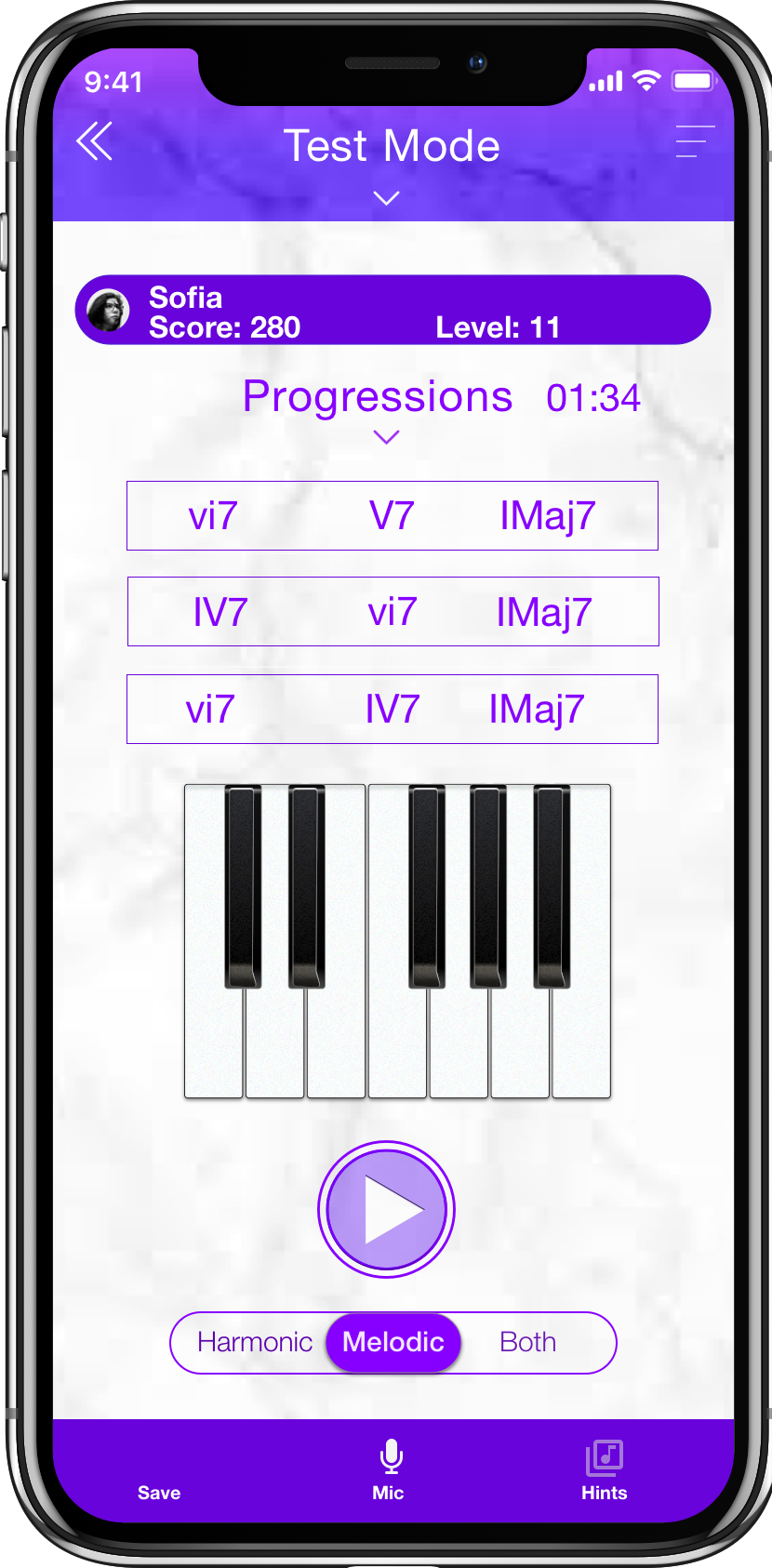
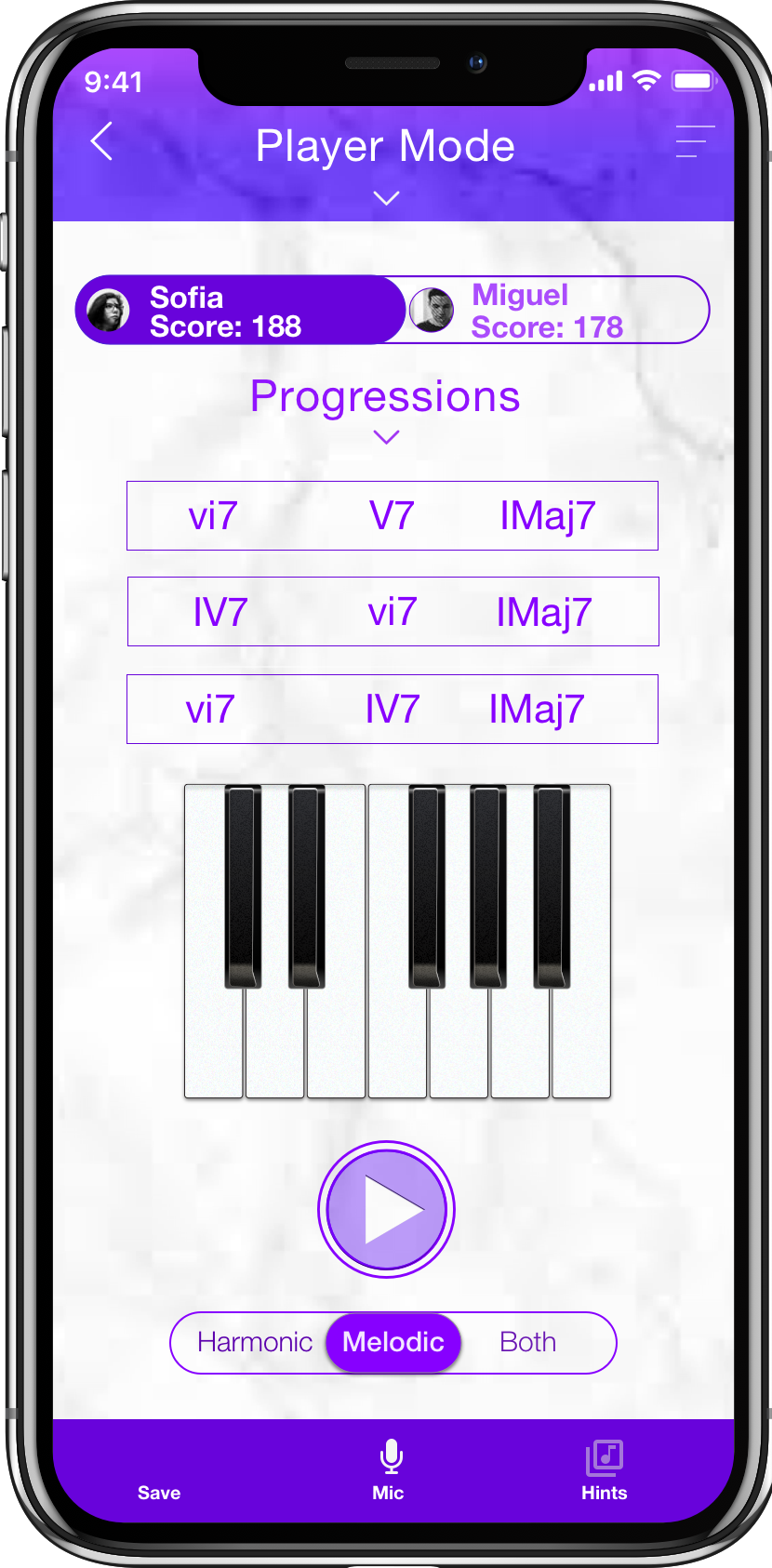
Competitive Analysis Report
Also maybe too long:
To further understanding my design direction I began researching the competitors and get a better understand of what products the target customers are currently using to solve the problem. I ask what are the competitors doing right, what are they’re doing wrong, and what strengths and weaknesses are in our own product. The goal is to see how I can create compelling competitive advantages and user experiences that are superior to theirs.
I researched over 30 apps including online courses and CD courses. My findings were that they did not have actual teaching lessons. From the beginning, they simply would test you to differentiate the sounds. Also, the examples were not from familiar modern-day songs.
"It was a boring and frustrating process of trial and error that made me feel incompetent and hoples in every learning!"
My hypothesis is that the apps did not actually teach, and that the examples were outdated and were not engaging. By offering the following experiences we can completely turned around and improve for the users learning experiance.
- Actual lessons without any pressure of quizzing or testing
- Using music that they actually listen to and relate with from their playlists
- Create games so friends can play and learn together will improve the experience making it more engaging and speed up the learning process.
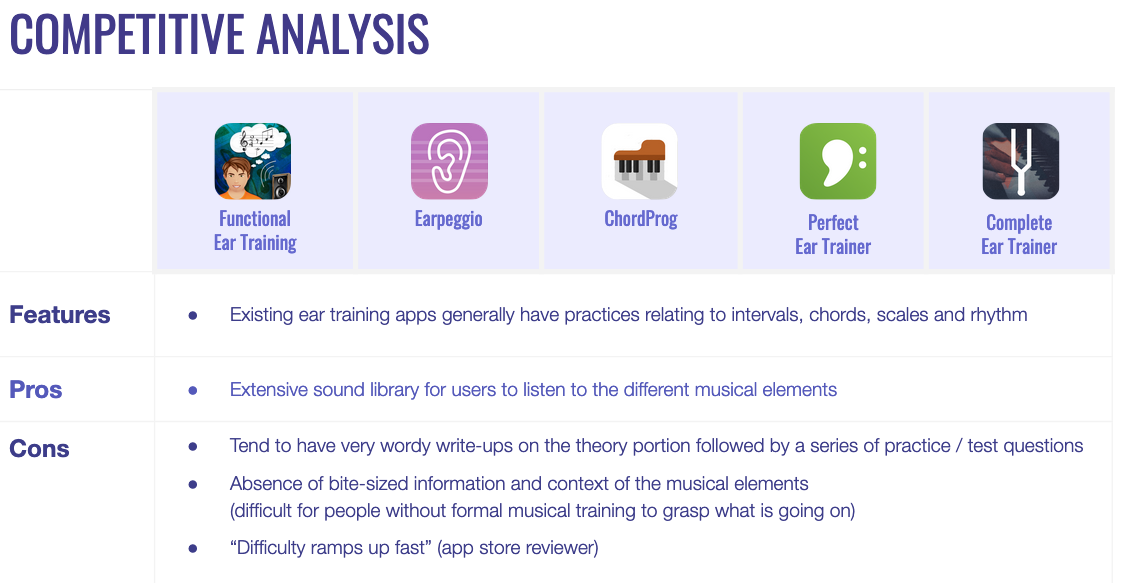
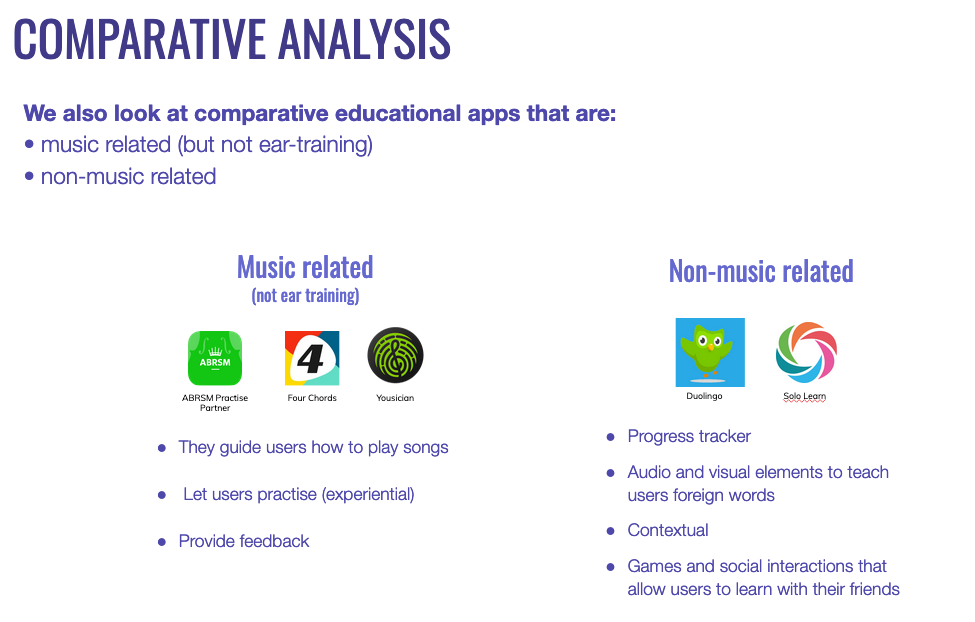
Affinity Mapping
User Insights

Enjoyment
Users prefer to learn with recreational activities, opposed to focusing on being tested without lessons to fist develop their ears.

Performance
Users want to play the things they like alone and/ or in front of others

Engaging
Users want to also learn with music they love and want challenges that align with their musical ability
Information Architecture, User Flow, and Site Map
The complexity of the Sitemap and Information Architecture was implementing the lesson structure into the design in a way that was seamless and easy to navigate.
From the interviews and initial user test, I got really interesting and valuable insights about our users that was helpful about the users' tasks and their pain points. We then create an experience map to extract pain points, goals, and persona information. It also helped to depict the user's path through their task in a way that highlights the order of the actions and the pain points they experience along the way. And helped to see how everything fits into the big picture.
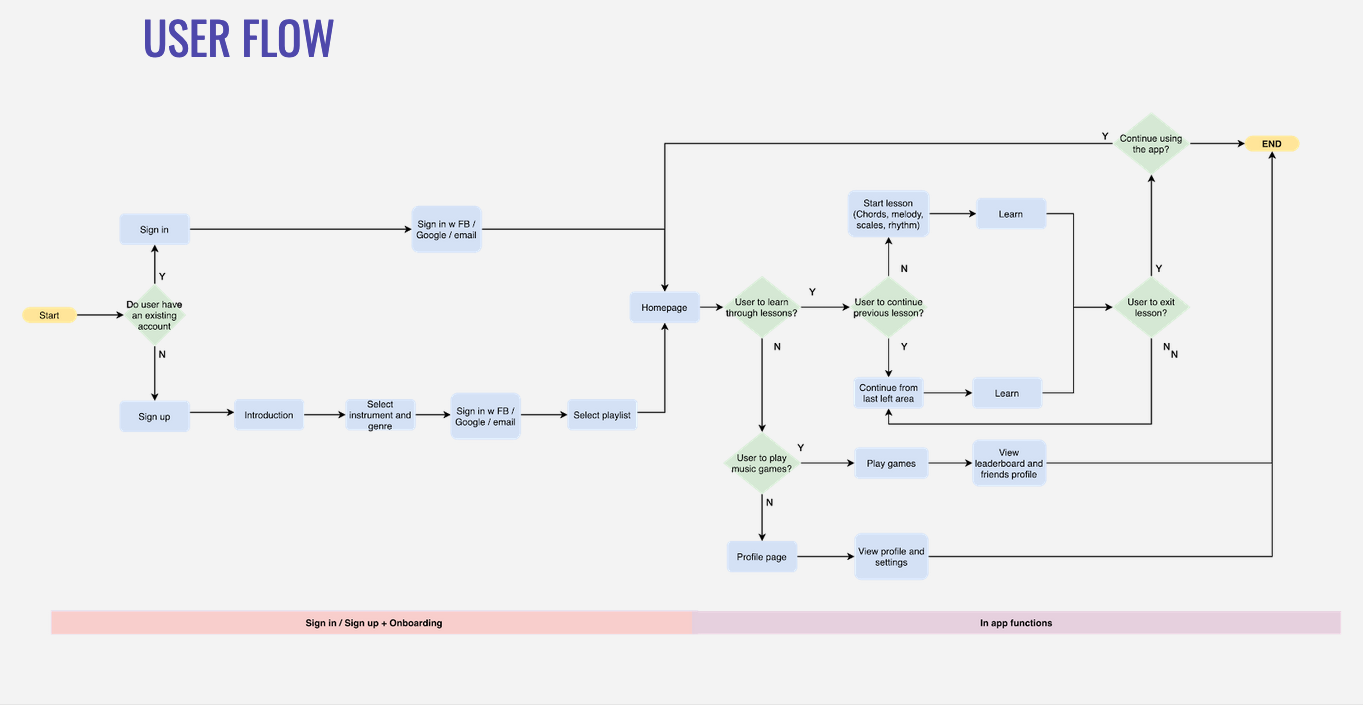
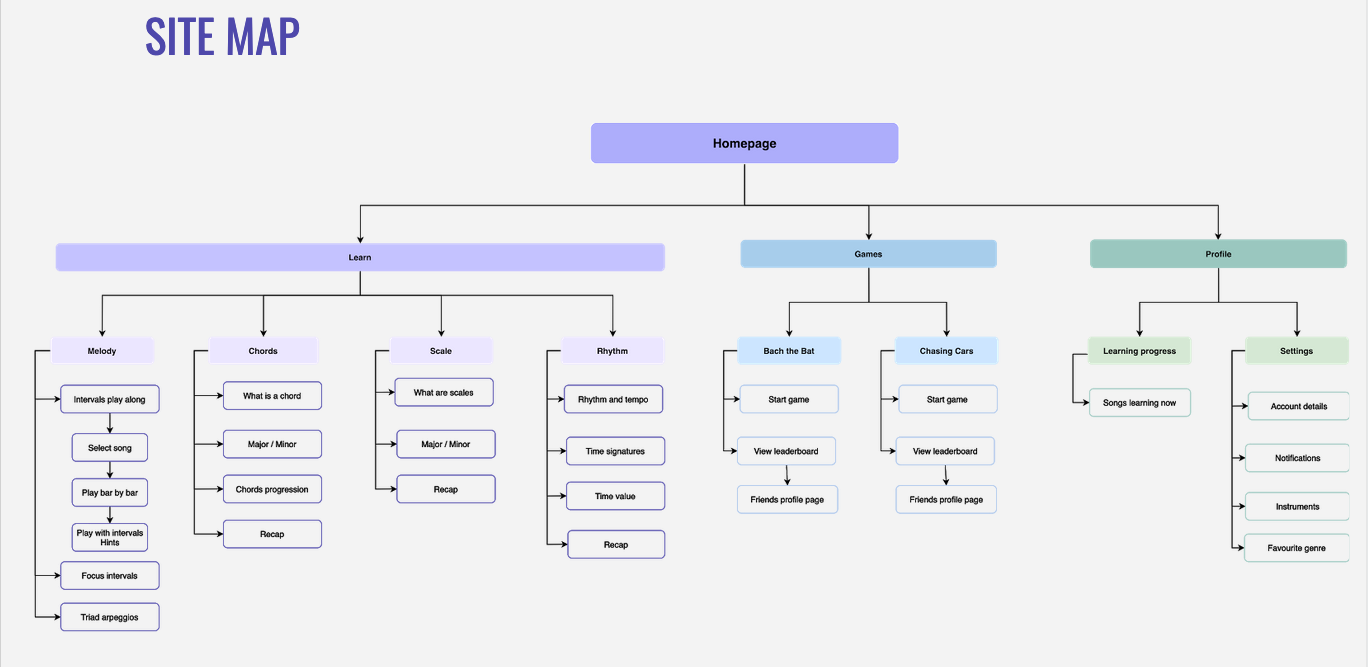
Persona
Elton 27
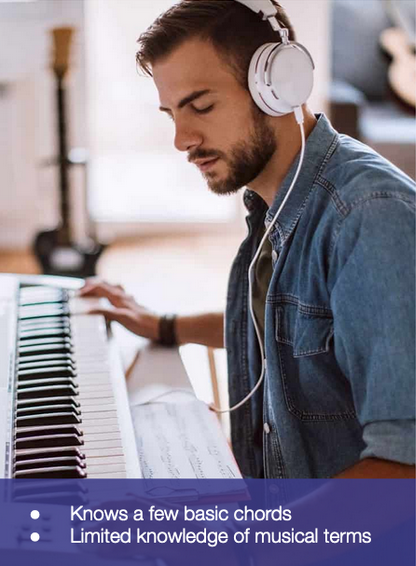
Goals and Needs
Wants to learn to play the songs he likes
Wants to learn to recognize the melody and chords of the song
Wants to jam with other musicians
Pain points
Finds ear training and music theory boring but he knows it is something he has to get through
Practice exercises are repetitive and not engaging
Scenario
Elton has been learning piano recreationally for a few months through YouTube videos. He has a few friends who play other instruments and he would like to jam with them. To do this, he needs to be able to identify melodies and chords by ear quickly, and thus, he is searching for a way to learn ear training on his own.
He hopes that by doing this he is able to identify what chords and melodies the other band-mates are playing, and quickly play the exact musical ideas in his head on his instrument literally without missing a beat while also having a great time jamming with his friends.
Our Design Focus
Unlike other ear-training apps in the market, our focus is NOT to come up with an extensive sound library but to cater to users who have no formal musical background and little ear-training skills.
Features
Learn Mode, Practice, Test Mode and Player Mode
Connect to your Music Libraries:
iTunes, Soundcloud, Spotify, Pandora, and YouTube
Engaging so you want to practice and improve
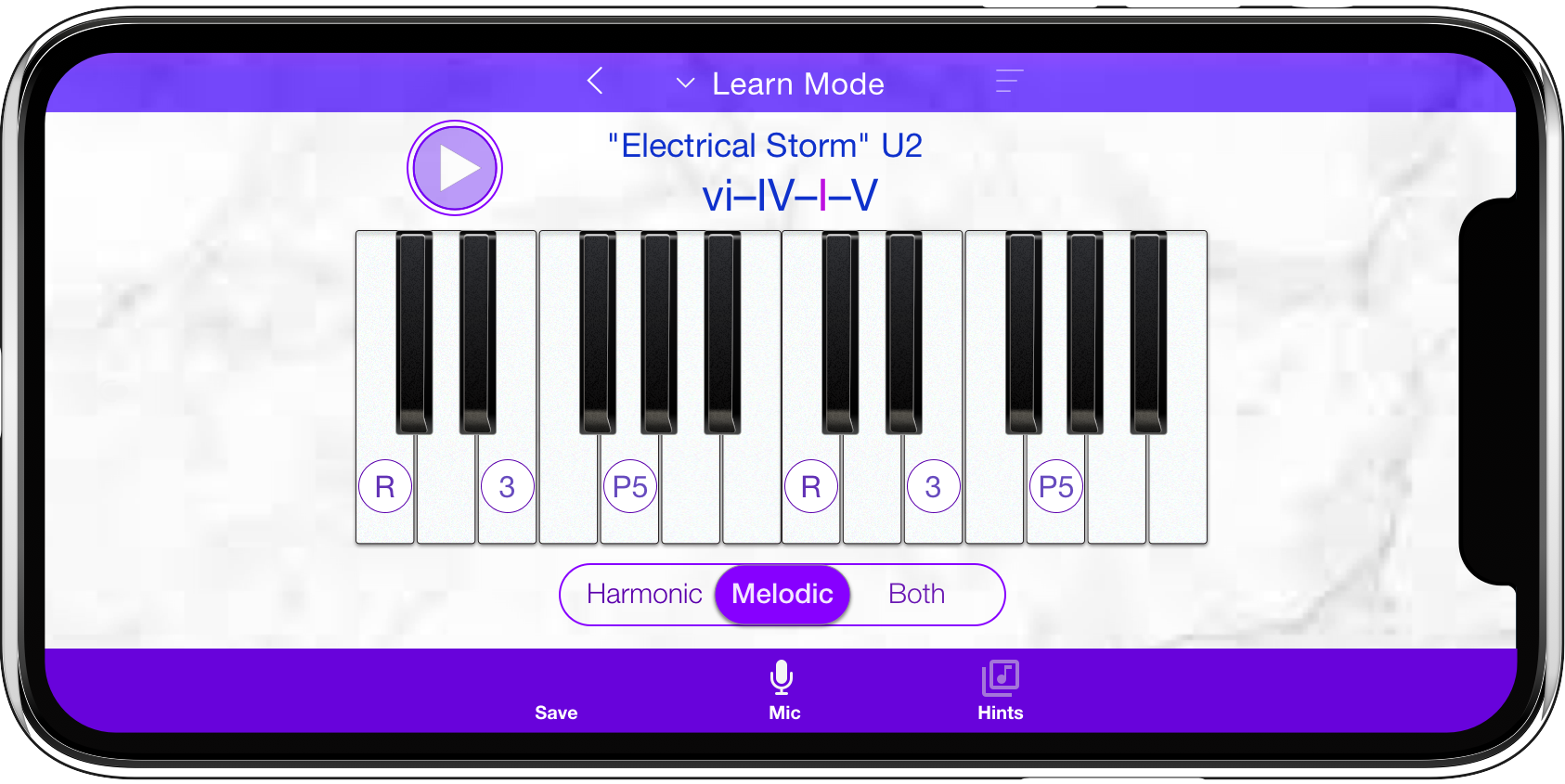
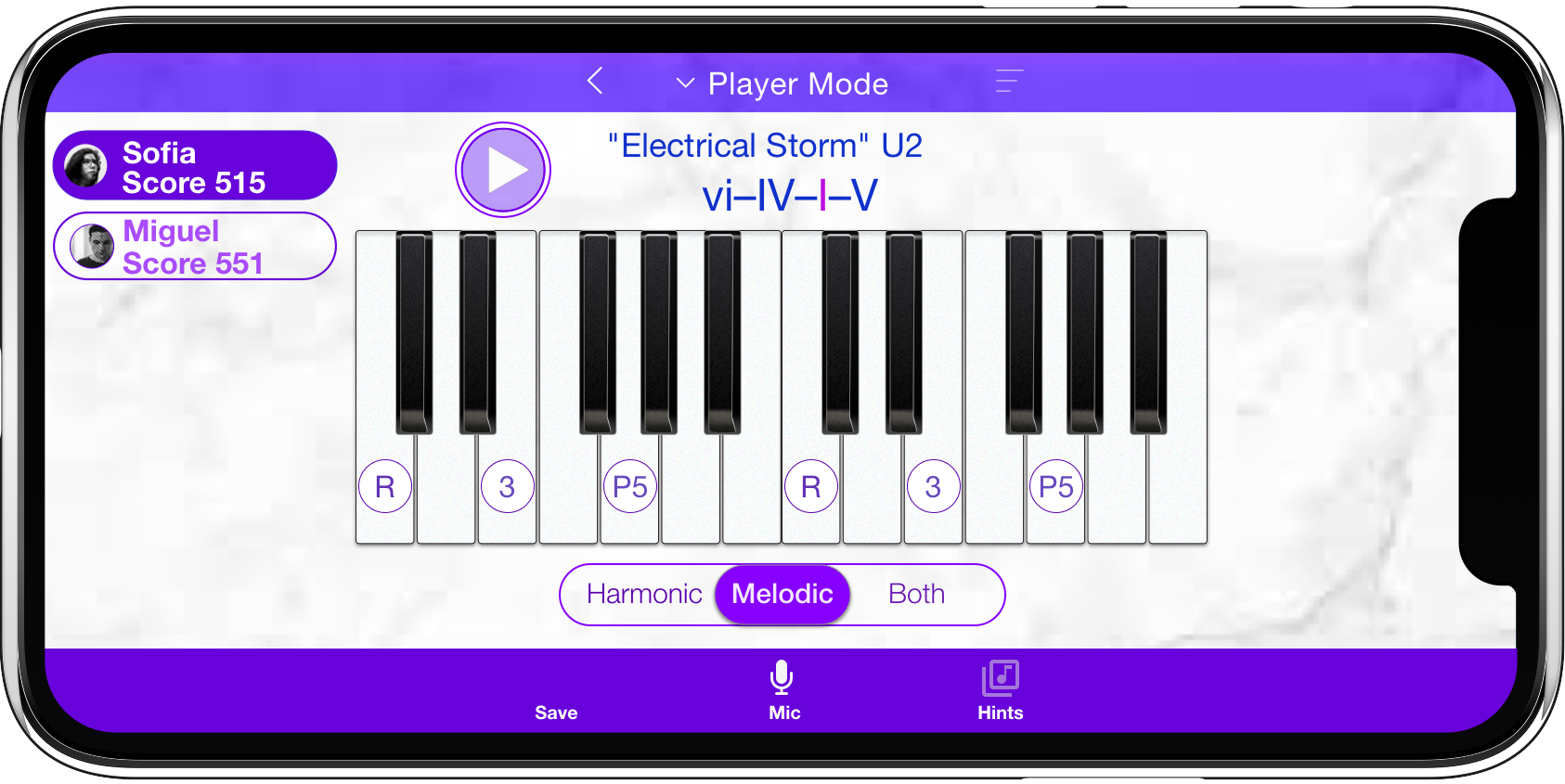
Ear training with songs from your play lists
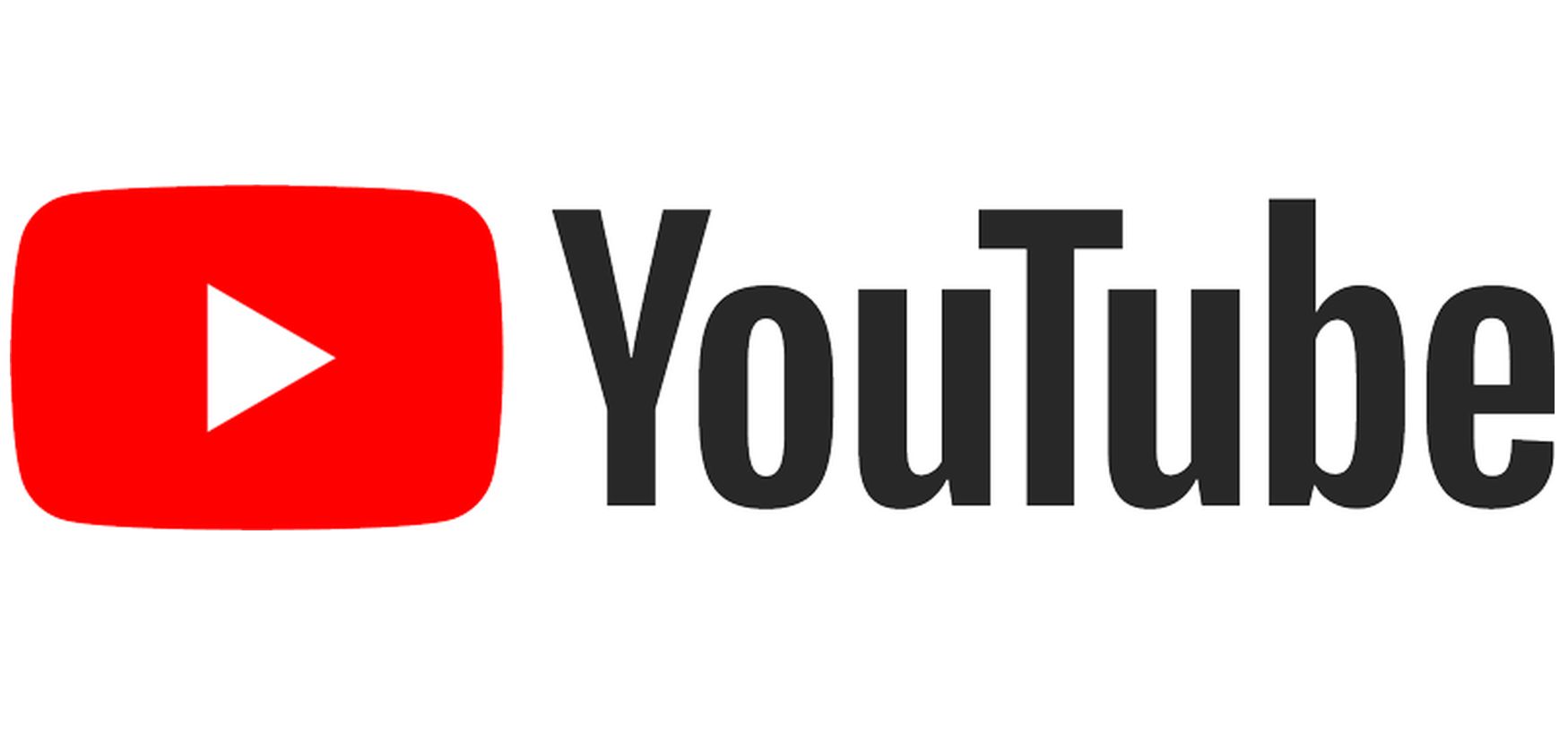

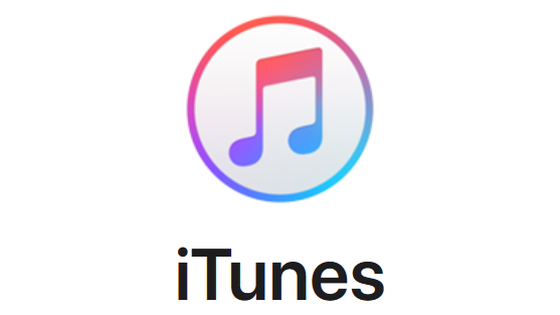
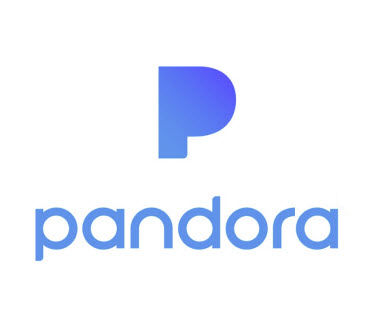
Followup User Testing
Research Goals
The goal of the research is to find out the motivation and pain points of ear training, what the users want to achieve from learning music by ear and what would help enhance their learning. (Ear training/ music aural)
Participants
These are the primary characteristics of the study's participants:
· Tertiary student or young working adult
· Age 20 - 30
· Knowledge of at least 1 instrument
· Basic to intermediate music knowledge
Methodology
A user interview were conducted remotely with the participants. The sessions lasted 30 - 45 minutes and included a short briefing, user interview session as well as a usability test of the existing ear training app.
User Insights
Users prefer to take music as a recreational activity as opposed to an examinable subject (Recreational player).
Users want to play the things they like alone and/ or in front of others (How to incorporate the social aspect).
Users want challenges that align with their musical ability.
7. Interactive Prototypes
For our hight fidelity interactive prototype, I decided to go with XD because of its newly implemented Audio features that go hand in hand with our ear training app. We focused on a smooth and delightful interaction design and usability heuristics.
The end result of the interactive prototype to help in our user testing immensely. The users were actually excited that it felt 100% real. they provided useful ideas and give valuable feedback.
Design System, Style Guide and Specifications for Developers
In building the styleguide I focused on keeping consistently across the brand and designed the visual styles, colors, fonts, typography, design patterns, language, and specifying UI behaviors such as onboarding, modals, error handling. animation, accessibility and even sound design.
Background and Purpose for designing the App:
- Designing an ear-training app to teach and not “Only” test users
- Current apps are testing users without giving the users the chance to listen and simply learn without the pressure of being tested (functions like quizzes). Also, when the user keep getting answers wrong in other apps, they “lose” and have to start over. But the problem of learning where they keep getting wrong is not addressed. They just keep getting it wrong and have to start again from the beginning. The user does not learn from this and gets frustrated and discouraged.
- Some require an instrument.
- The purpose of The Ultimate Ear Training app is to let users hear and understand the music before testing/quizzing them. This is important for the basics of learning to hear notes and music.
- Developing your ear through ear training is vital for music improvisation and music writing. Music is in based time and users have to master ear training quickly respond and react while staying on time to create music.
Preliminary Ideas for the App:
- One idea for the app is for users to connect to their music library (eg, Spotify) to pull out songs with the chord/ progression that they are learning
- Different Modes:
- Listen Mode: App will play the interval/ scale/ chord 3 times (no. of time adjustable) so that users can listen to them
- Practice Mode: Much like other apps where users have to identify the interval/ chord played
- Test Mode: Practice Mode + time and scores
- Game Mode: Interactive with other users
- Some lesson plans:
- Different stages- start with learning intervals first (perfect fifths, fourths and thirds), then proceed to chord
- Different instruments- start with different keys (eg, E/ A for guitar; C/ G piano)
- Different genres- cater lesson materials according to musical interests
Trends in Ear-Training App:
- Guitar tuner apps are mainly focused on chords→ would be nice to allow users to listen to a wide range of chords
- Tonality (eg, learning everything within the C-major scale)
- Gamification
- Leaderboard and sharing badges/ achievements on social media
Things to find out from user interviews:
- What genre/ musicians/ songs they listen to (ask users to share their playlists)
- What music learning apps do they use
- Pros and cons of the apps they using
- What instruments do they play
- How they learned to plat their instrument (their process of picking up music)
- Whether they have experience with the solfege training (classical ear training)
- Whether diatonic or chromatic works better for users
- What would help them learn (so that we can know what hints to include in the app)
- What would users find useful
- What are the features they want quick access to
- Do they want Reminders/Notifications
- What type of hints/tips would they like
Deliverables:
- Onboarding
- Walk users through on how to use the app (animated instructions to explain what scales/ chords are etc)
- Profile set-up:
- Layout
- Instrument
- Genre
- Optional evaluation
- Questions to help customise lessons for users
- Select music library to be used
- IA and User flow
- How to structure the lesson
- What features to include that would benefit the users
- Different player mode
- Gamification of lessons
- Design of leaderboard (friends vs in-app users)
- Footer items (3 - 5 items)
- Style guide
- Prototype
- For testing purpose, we would use pre-loaded songs instead of a music library because the algorithm has not been set up
- User testing on current app: 2-3 days
- Focus on lo-fi testing (paper sketches/ basic wireframes) first instead of the UI aspect
Changes to the existing app:
- Have a drop down on the heading to switch to different tonal organization (easy navigation)
- Allow users to set goals/ reminders
- Change leaderboard layout from ‘This Week/ All Time’ to ‘Friends/ In-App Users’
- Recommend users songs that are not in their playlist but of similar genres with the chords that they are learning
- Gamification (explore ways to make learning fun)




